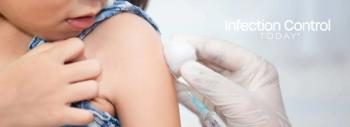
Researchers Find High Microbiological Contamination of Clinicians' Mobile Phones in ICUs, NICUs
The objective of this study by Heyba, et al. (2015) was to explore the prevalence of microbiological contamination of mobile phones that belong to clinicians in intensive care units (ICUs), pediatric intensive care units (PICUs) and neonatal care units (NCUs) in all public secondary care hospitals in Kuwait. The study also aimed to describe mobile phones disinfection practices as well as factors associated with mobile phone contamination.
This is a cross-sectional study that included all clinicians with mobile phones in ICUs, PICUs, and NCUs in all secondary care hospitals in Kuwait. Samples for culture were collected from mobile phones and transported for microbiological identification using standard laboratory methods. Self-administered questionnaire was used to gather data on mobile phones disinfection practices.
Out of 213 mobile phones, 157 (73.7 %, 95 % CI [67.2–79.5 %]) were colonized. Coagulase-negative staphylococci followed by Micrococcus were predominantly isolated from the mobile phones; 62.9 % and 28.6 % of all mobile phones, respectively. Methicillin-resistant Staphylococcus aureus (MRSA) and Gram-negative bacteria were identified in 1.4 % and 7.0 % of the mobile phones, respectively. Sixty-eight clinicians (33.5 %) reported that they disinfected their mobile phones, with the majority disinfecting their mobile phones only when they get dirty. The only factor that was significantly associated with mobile phone contamination was whether a clinician has ever disinfected his/her mobile phone; adjusted odds ratio 2.42 (95 % CI [1.08–5.41], p-value = 0.031).
The researchers conclude that the prevalence of mobile phone contamination is high in ICUs, PICUs, and NCUs in public secondary care hospitals in Kuwait. Although some of the isolated organisms can be considered non-pathogenic, various reports described their potential harm particularly among patients in ICU and NCU settings. Isolation of MRSA and Gram-negative bacteria from mobile phones of clinicians treating patients in high-risk healthcare settings is of a major concern, and calls for efforts to consider guidelines for mobile phone disinfection. Their research was published in
Reference: Heyba M, Ismaiel M, Alotaibi A, Mahmoud M, Baqer H, Safar A, Al-Sweih N and Al-Taiar A. Microbiological contamination of mobile phones of clinicians in intensive care units and neonatal care units in public hospitals in Kuwait. BMC Infectious Diseases 2015, 15:434 doi:10.1186/s12879-015-1172-9
Newsletter
Stay prepared and protected with Infection Control Today's newsletter, delivering essential updates, best practices, and expert insights for infection preventionists.






